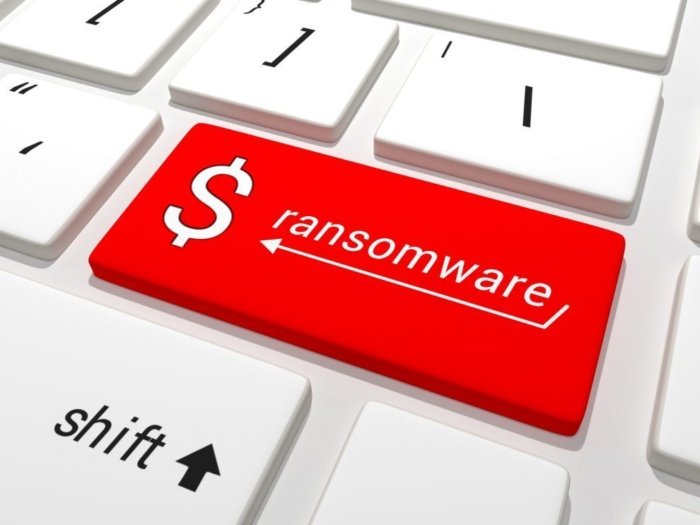 Blog's Page
Blog's Page

Ransomware Is A Type Of Computer Code, That Can Annihilate The Complete Computer's Function And Hardware Like CPU, Hard Disk, And Peripheral Devices Such As Printer, Camera And More. In The Other Words, Ransomware Is A Malign Software Program To Infiltrate The System Without Permission. Ransomware Is A malware And Cryptovirus To Encrypts The Files, Images Files, Video Files, Databases And More. Ransomware May Generate Lot Of Trouble.
Ransomware Is Malware That Employs Encryption To Hold A Victim’s Information At Ransom. A User Or Organization’s Critical Data Is Encrypted So That They Cannot Access Files, Databases, Or Applications. A Ransom Is Then Demanded To Provide Access. Ransomware Is Often Designed To Spread Across A Network And Target Database And File Servers, And Can Thus Quickly Paralyze An Entire Organization. It Is A Growing Threat, Generating Billions Of Dollars In Payments To Cybercriminals And Inflicting Significant Damage And Expenses For Businesses And Governmental Organizations.
Ransomware May Distribute Through Trojan Virus As Well As The Phishing E-mail. This Is Common Process Adopted By The Ransomware Developer. One Thing Is Better For Ransomware Is That Ransomware Doesn't Appear On Its Own.
There Are Number Of Path To Disperse Ransomware On The Internet Or Network, Which Is Described Underneath:
Ransomware Attacks And Their Variants Are Rapidly Evolving To Counter Preventive Technologies For Several Reasons:
Today’s Thieves Don’t Even Have To Be Tech Savvy. Ransomware Marketplaces Have Sprouted Up Online, Offering Malware Strains For Any Would-be Cybercrook And Generating Extra Profit For The Malware Authors, Who Often Ask For A Cut In The Ransom Proceeds.
Ransomware Works Very Intelligently To Target The Internet User. Ransomware Utilizes The Spam Mail, Phishing Email To Allure The User Of The Internet. However, Ransomware May Also Use Social Engineering To Distribute Code, Which May Work To Reconfigure The Computer System File Step By Step. Even Though Ransomware Is A Considered As A More Advanced Malware Program. Ransomware Can Create A Vulnerable Condition Inside The Machine.
Ransomware Uses Asymmetric Encryption. This Is Cryptography That Uses A Pair Of Keys To Encrypt And Decrypt A File. The Public-private Pair Of Keys Is Uniquely Generated By The Attacker For The Victim, With The Private Key To Decrypt The Files Stored On The Attacker’s Server. The Attacker Makes The Private Key Available To The Victim Only After The Ransom Is Paid, Though As Seen In Recent Ransomware Campaigns, That Is Not Always The Case. Without Access To The Private Key, It Is Nearly Impossible To Decrypt The Files That Are Being Held For Ransom.
Many Variations Of Ransomware Exist. Often Ransomware (and Other Malware) Is Distributed Using Email Spam Campaigns Or Through Targeted Attacks. Malware Needs An Attack Vector To Establish Its Presence On An Endpoint. After Presence Is Established, Malware Stays On The System Until Its Task Is Accomplished.
After A Successful Exploit, Ransomware Drops And Executes A Malicious Binary On The Infected System. This Binary Then Searches And Encrypts Valuable Files, Such As Microsoft Word Documents, Images, Databases, And So On. The Ransomware May Also Exploit System And Network Vulnerabilities To Spread To Other Systems And Possibly Across Entire Organizations.
Once Files Are Encrypted, Ransomware Prompts The User For A Ransom To Be Paid Within 24 To 48 Hours To Decrypt The Files, Or They Will Be Lost Forever. If A Data Backup Is Unavailable Or Those Backups Were Themselves Encrypted, The Victim Is Faced With Paying The Ransom To Recover Personal Files.
Ransomware May Infect The Computer System, Peripheral Devices Such As Camera, Printer, Music Player, Scanner And More. Ransomware Would Possible To Contaminate The Files And Web Browser As Well As The Domain Name System (DNS). There Are Number Of Items Infected By The Ransomware, Which Is Described:
Ransomware Does Not Remove Into Normal Process Like Any Strange File. Because Ransomware Is A Very Advance Malware Code, That Can Remove By The Computer Security Experts Or Reinstall The Operating System Again. You Never Should Pay Any Ransom While Perpetrators Always Ask The Pay The Ransom And Get The Decryption Code.
You Should Always Create A Backup File And Save Them To Other Location, Does Not In The Same Computer System, Where To Do Works Daily. You Should Apply The Precaution Against The Ransomware, Which Is Explain Below:
Furthermore, Precaution Is The Best Option To Avoid The Ransomware Enter Your Computer System, While Surfing The Internet.
Note: You Will Try Any Anti-virus, Anti-malware, Internet Security, VPN Software To Secure The Computer Terminal.
To Avoid Ransomware And Mitigate Damage If You Are Attacked, Follow These Tips:
Ransomware-as-a-service Is A Cybercrime Economic Model That Allows Malware Developers To Earn Money For Their Creations Without The Need To Distribute Their Threats. Non-technical Criminals Buy Their Wares And Launch The Infections, While Paying The Developers A Percentage Of Their Take. The Developers Run Relatively Few Risks, And Their Customers Do Most Of The Work. Some Instances Of Ransomware-as-a-service Use Subscriptions While Others Require Registration To Gain Access To The Ransomware.
Ransomware, What Is A Ransomware, How To Remove Ra